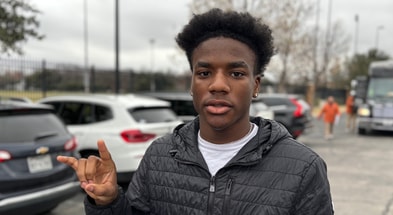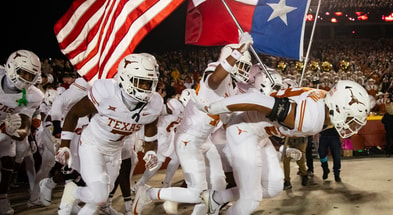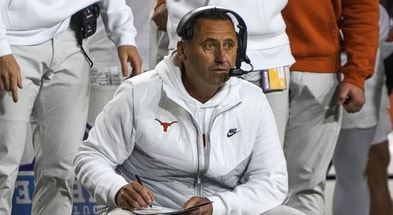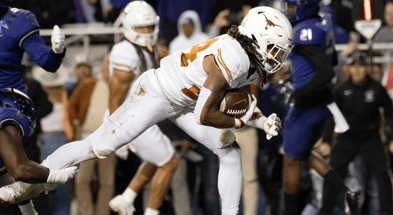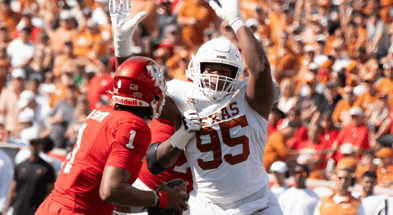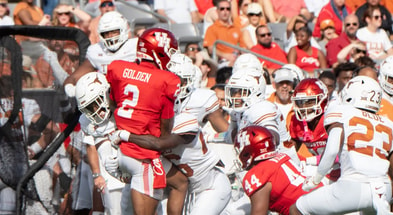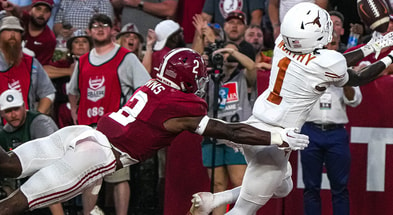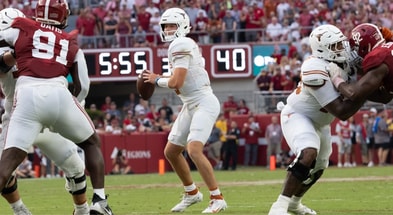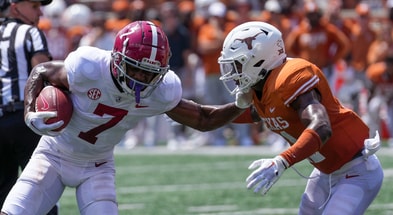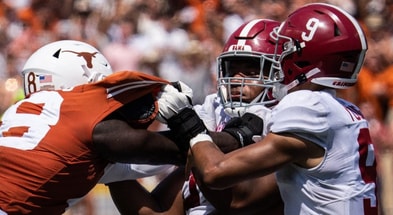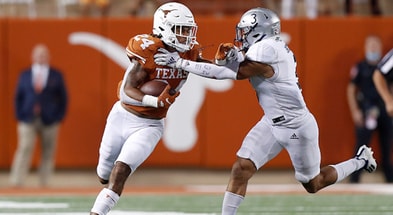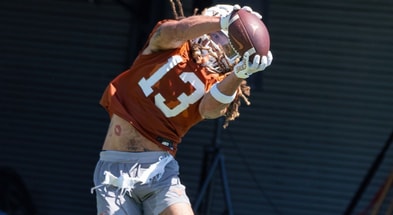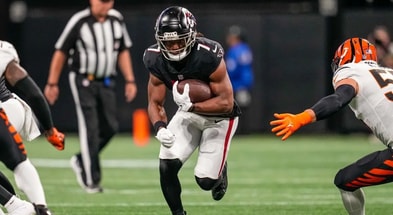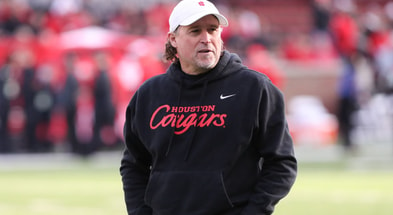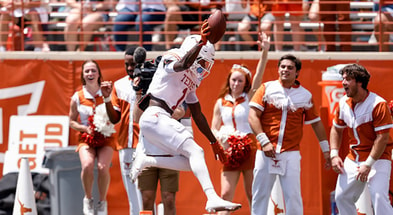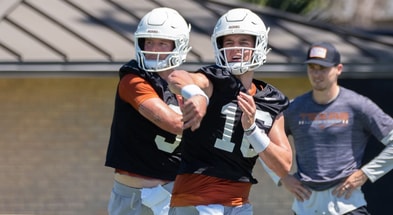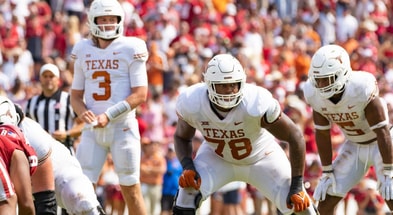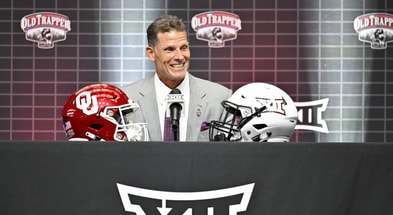Inside the Gameplan: Gray and the RBs

In our continuing series, Ian Boyd goes position-by-position with the Gameplan leading up until August. So far: Tight Ends
Like so many other highly-rated recruits at Texas over the last half-decade, Johnathan Gray’s collegiate career hasn’t been all that it was hoped to be.
With OL Darius James transferring to Auburn and DT Malcom Brown departing early for the NFL, there are now only two former 5-star recruits on the Texas roster: Malik Jefferson, the great hope for the future, and Gray.
There was a time when people suspected that Gray would co-own a timeshare in the Texas backfield with fellow 5-star back Malcolm Brown for just three years before departing early for the NFL. Gray was as close to a sure thing as Texas has recruited at the position with high school highlight films that could run for five or six minutes without including a run where Gray was tackled before he crossed the goal line.
The 2013 Texas offense was designed to feature Gray’s considerable talents by emphasizing more spread formations where he was comfortable and opening up room for him in the middle with RPOs and perimeter screens. The timeshare with Malcolm Brown worked reasonably well with the two combining for 373 carries, 1684 yards,4.5 ypc, and 13 touchdowns.
Even with Case McCoy at the helm of the Texas passing game, the combination of a senior-laden OL and the Gray-Brown combo made for the most potent Texas run-game since 2007.
Then Gray went down against West Virginia with the Achilles injury, Texas lost its entire OL to graduation, attrition, or injury, and Ash went down again preventing the offense from having a strong passing game or leader to lean on.
The Brown-Gray timeshare combined for 330 carries, 1345 yards, 4.1 ypc, and 13 touchdowns in these less ideal conditions. Now, it’s just Gray and a cast of freshman left to carry a Texas run-game that has failed to terrify Big 12 opponents for some time.
Barring a breakthrough season from Duke Catalon, Chris Warren, or D’Onta Foreman, Texas is going to need its first 1k rushing yard season since 2007 to come in 2015 from Gray to even tread water on offense from the 2014 campaign. In addition to being the sole former 5-star offensive recruit on campus, Gray is the best hope for the 2015 year.
Roles and fits
The Heard vs Swoopes debate filters into every offensive position on the team because each QB represents a different direction and identity for the offense. Now this is actually needless, there’s enough overlap between the two players to run a simple, but effective, offense that suits both, but instead they represent a clash of competing visions for the offense.
The Swoopes offense is a 2nd generation unit that combines the spread-option with the West Coast offense while the Heard system is a more pure spread-option that is less ambitious with the pro-style passing concepts in favor of a simpler and play-action oriented throwing game.
At running back, the offense can go in either direction and Gray is still going to be the main figure but his role may change with either direction.
As we discussed last week in describing the current situation at the tight end position, the way for Texas to get the needed talent on the field to execute Watson’s passing game might be to rely more on 10 personnel packages (four receivers, one running back) that replace Texas’ middling ancillaries with receivers.
For instance, is an opponent more worried about defending a combination of Marcus Johnson-Petey Warrick-Alex De La Torre-Army Foreman or trying to defend Dorian Leonard-Marcus Johnson-Petey Warrick-Army Foreman?
With Swoopes at the helm it seems likely that group 2 will prove to be the more dangerous, but it leaves one remaining challenge; Pass protection.
Subbing out DLT for another receiver reduces options for pass protection and makes 6-man protection schemes the best Texas can offer for buying time on deeper passing patterns. That also makes the ability to help out in protection an essential task of the running back. Unless both tackles are very good and the interior works well together in stopping interior pressure, neither of which are the case for Texas, the RB needs to be a real asset in protection and/or providing a release valve.
In that kind of offense, Gray and Catalon are your two favorite options as they are both adept as receivers and blockers in the backfield.
In a more Heard-oriented offense, in which the running game is king and the offense more regularly features a fullback or tight end to help create variety and flexibility in the blocking angles, Gray and Catalon still both have great value.
Texas has a dearth of proven playmakers in the offense with the biggest contributors from last year all graduating (Brown, Jaxon Shipley, John Harris) and most of the rising candidates consisting of underclassmen. If the run-game is going to be king than the runners need to either be bringing some explosiveness or enough consistent gains to make play-action a viable threat.
But in the Heard offense, D’Onta Foreman and Chris Warren can have a larger role in the system. Both are power backs who are going to excel when their primary role is to run through depleted defensive fronts who’s attention is focused on stopping play-option passes, vertical shots, or the quarterback.
If either of them has talent that demands a role in 2015, that role is going to come more easily as a part of a Heard offense where running the ball between the tackles comprises the vast majority of their assignments.
Baylor has had five consecutive seasons of 1k yard backs by plugging in a wide variety of different types of players at the position and asking them only to run on outmanned fronts while surrounded by constraints. Hopefully someday soon Texas can match that.
Schemes and skills
In 2014, one of Texas’ best run schemes was the lead zone play:
 There are several varieties of zone plays that can utilize the H-back such as the slice play (where he traps the DE), the boss (where he arcs around the unblocked DE and picks off a linebacker), the wham play (where he traps an unblocked DT), and the basic lead play demonstrated above which works like a classic Iso run. In this iso/lead play, the H-back blasts a linebacker out of the way between the tackles.
There are several varieties of zone plays that can utilize the H-back such as the slice play (where he traps the DE), the boss (where he arcs around the unblocked DE and picks off a linebacker), the wham play (where he traps an unblocked DT), and the basic lead play demonstrated above which works like a classic Iso run. In this iso/lead play, the H-back blasts a linebacker out of the way between the tackles.
This play worked well for Gray because his mastery of lateral cuts and jump steps allows him to punish the backside linebacker for vacating his gap.
If that “W” (representing the weakside linebacker) flows too hard with the H-back to make the tackle after the “M” (middle linebacker) blows up the H-back’s block, then Gray would cut back into the backside A-gap that the weakside backer abandoned.
Top 10
- 1
Down goes No. 2 Duke
Clemson opens the door for Bama
- 2
No. 1 Auburn upset
Florida dominates Tigers
- 3New
Dusty May
Gets ahead of Indiana rumors
- 4
Rick Pitino
New sheriff in Big Ten?
- 5
Ryan Day
Buyout revealed from new contract
Get the On3 Top 10 to your inbox every morning
By clicking "Subscribe to Newsletter", I agree to On3's Privacy Notice, Terms, and use of my personal information described therein.
The same principle applies on gap schemes like power and counter:
If the backside linebacker (this time the middle linebacker)flows too hard to follow the lead block of the pulling guard, then Gray can immediately run through the vacated gap. If not, he just follows his blocks.
You can see here why the Spread-I formation is growing in popularity as it allows a lot of misdirection, variety, and physicality in the run-game while still allowing the offense to spread the field.
This style of offense is generally going to be a good fit for any good runner since it can adjust to run a variety of different schemes but this combination was excellent for Gray who thrives when he has options on where to cut, and space in which to do it.
However, if Texas is pushed to play more four-WR formations to get the best talent on the field and/or if none of the tight ends can provide the needed blocking at H-back to replace Swaim, the preferred run plays will have to change.
In all likelihood, the second leading rusher for the 2015 Longhorns won’t be another running back but the QB. That means more option runs and here the reads and qualities for the back are a bit different.
First, there’s the power-read, which is theoretically a perfect match for Swoopes’ running talents and was a preferred staple for Heard at Denton Guyer:
The play works based on the QB’s read of the unblocked defensive end, if that player goes wide to stop the RB then the QB will pull the ball and run downhill. If the end stays home to stop the QB, the ball goes wide with the running back.
Now the running back is simply a sweep runner while the quarterback runs between the tackles and potentially attacks the cutback lane. For this purpose the running back can be anyone who has the speed to win the edge and the ability to plant and cut up field. There’s no reason that any of the RBs on campus couldn’t thrive in this scheme assuming good reads by the QB and good blocking by the WRs.
Then there’s your more traditional zone read:
Teams run this play different ways and Texas will likely mix in several different variations on the concept but the standard way the play works is this; the QB reads the defensive end and pulls the ball and attacks the backside edge if the end chases the running back.
If the end stays home, the QB hands it off and the RB runs behind the double teams or bounces it outside. Some teams will have him run behind the double team of the defensive tackle on the backside and then cut inside of the defensive end. With Gray perhaps Texas will do both since he has excellent vision for making reads and cuts but he’s better bouncing runs outside than trying to power past an out-leveraged and unblocked DE who could trip him up.
In terms of the passing game, the running backs sadly didn’t get heavily involved last year but the best response to defensive pressure in 2014 was the quick flare pass to the running back:
This should remain the case in 2015 with Gray back and Catalon coming up the ranks, but there will probably also be a lot of slide protection in order to take some deeper shots:
You can slide the line to the left with the quick Marcus Hutchins commanding one edge and then Gray cutting an unblocked defensive end on the backside. This blocking scheme would also emulate zone read and perhaps allow the seam routes in the middle of the field to get open against an overly run-conscious LB and safety group.
A single constant
Texas is starting to accumulate a lot of talented backs on campus, as should be the case, with the versatile Catalon, interesting prospects in Tristan Houston, Foreman, Kirk Johnson, and a possible future stud in Warren Jr. Most of them are still rather young and undeveloped save perhaps for Catalon, while Gray is the constant.
Gray’s skill set is extensive and universal enough that although he’s likely to be the featured offensive skill talent in 2015, Texas needn’t necessarily cater exclusively to his strengths in choosing the surrounding personnel and main schematic components. The staff just better make sure he’s a regular part of the gameplan and surrounded by run-game constraints that can work.
If Gray is injured or otherwise ineffective, Texas is left with miscast and undeveloped pieces on offense for Watson to try and cook into a stew that few of us are going to be interested in sampling. Hopefully this is the year when his talent shines through at last.








